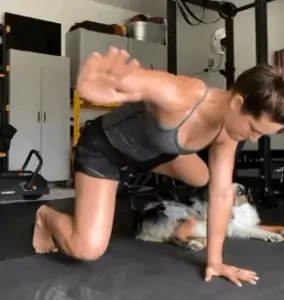The yogi vs. the power-lifter.
While on the surface these two appear to be so different that they might even be mortal enemies … the reality couldn’t be further from the truth.
In fact, for someone to reach their maximum fitness and performance potential, each should be learning quite a bit from the other!
The yogi is versed in mobility, while the lifter is versed in strength output … but together, they take strength to a whole new level.
Many people tend to view mobility training as mostly stretching and flexibility, when we look at mobility as having the neurological strength to move freely through ranges of motion that each joint was designed to move through.
How exactly does mobility – the ability to move freely through your joints’ range of motion – benefit your lifts?
We dive in below.
Why Mobility Is Essential For Improving Your Strength Training
Deeper Range Of Motion = Deeper Muscle Activation

Mobility training is designed to increase range of motion (ROM) by increasing joint, muscle, tendon, and ligament flexibility, alongside strength. If we look at the old bamboo analogy, mobility allows us to create a body that is able to deeply bend without breaking due to it’s flexibility AND strength. In a mobile body, these two are not mutually exclusive, and in fact, one helps build the other.
Let’s look at an example: imagine you’re squatting with weight. As you lower into the squat, your hip joints are what allow you to sink into a deep squat (which is crucial for maximum engagement of muscle fibers throughout your glutes and thighs). The deeper your hip joints and flexors allow you to squat, the more muscle you’ll be able to engage, and the more muscle you engage, the more strength you’ll be able to gain.
Now, if your hip joints and flexors are stiff, they aren’t going to give you as much depth in your squat, which can lead to less opportunity to activate your muscle fibers. Aka: it can negatively impact your strength.
This applies across your body. If any of your joints are stiff, it can limit your ROM, leading to less full-range strength in certain muscle groups.
On the other hand, if you are training mobility, you can increase strength throughout the full range of all muscles, which can result in the ability to output more power overall.
Injury Avoidance
This one is huge, since we typically (and especially in sports) only start mobility training after recovering from an injury!
If we take a proactive approach instead and start creating a bendable body before it is tested, we can potentially eliminate tons of injuries down the line.
Many injuries are caused by overextending joints, muscles, ligaments, etc … which could be remedied by increasing their flexibility (which, even if an injury is inevitable, could reduce an injuries’ overall severity).
Neurological Control
Mobility training encourages focus on neurological control of movements and muscles. When you’re moving through certain movements such as rotations, you have to exert control over your speed and depth (especially if you’re doing some of these movements with ankle or hand weights). This leads to increased control and stability when you are working with heavy weight … which then improves form, leading to improved strength gains.
As you probably guessed, control is huge when it comes to preventing injury, in sports or otherwise. Check out and try out this “control test” Natalie put together on Instagram:

The bottom line is: mobility training can and should be part of any strength training regime! If you want to get started on adding mobility sequences to yours, definitely check out the Durable Athlete App, which features all kinds of tutorials and programs to get you mobile and strong (P.S.: You also get 14 days FREE when you sign up!).
